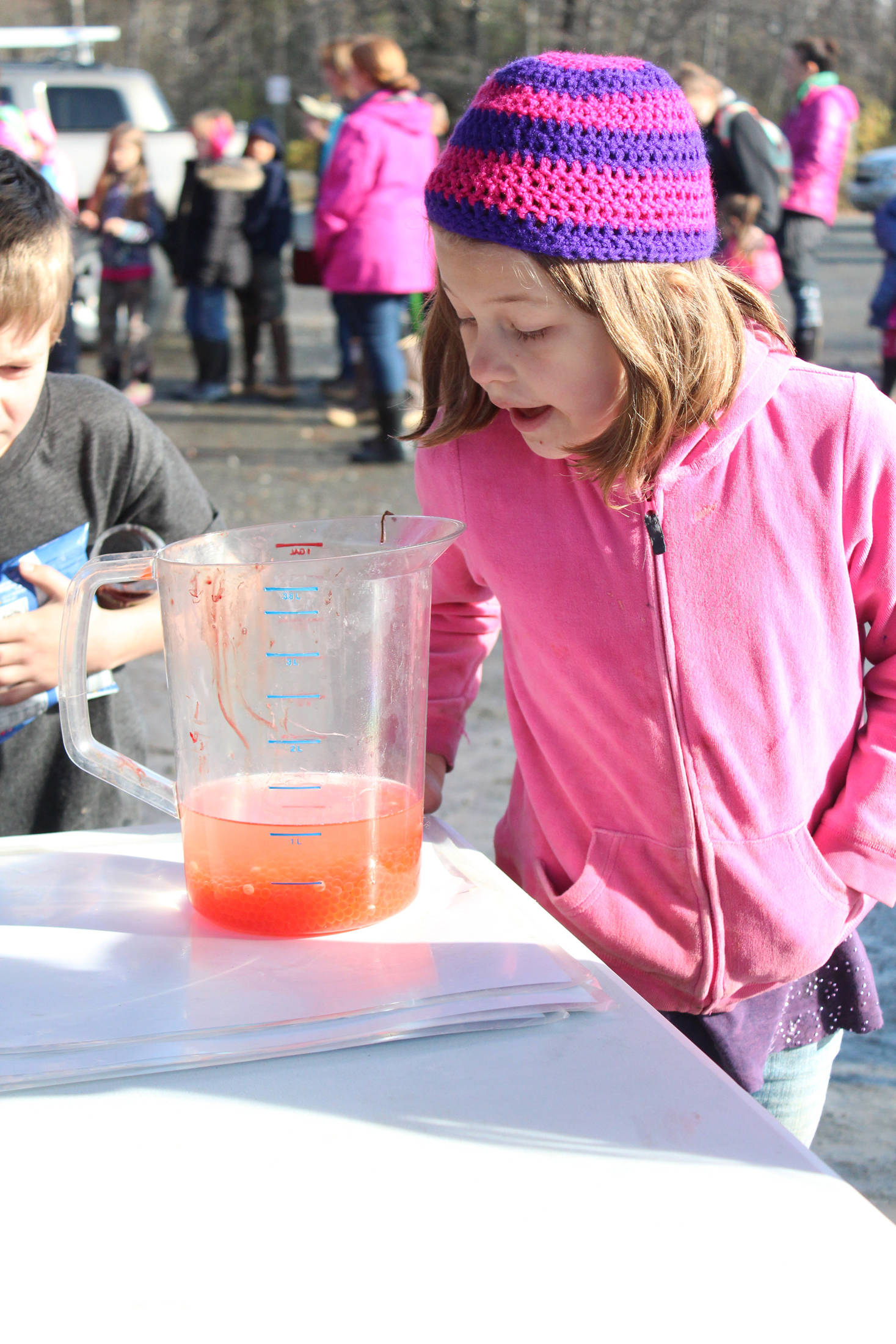Sometimes it’s nice to go back to where it all begins. At least that’s what several lower Kenai Peninsula elementary school kids did last week when they attended a field trip in Anchor Point that brought them to the beginning of the salmon life cycle.
Dozens of curious necks strained to see what Jenny Gates, a fisheries biologist with the Soldotna office of the Alaska Department of Fish and Game, Division of Sport Fish, was doing near the bank of the Anchor River in Anchor Point on Thursday. She was helping one young student squeeze the milt (the white fluid containing sperm) from a male coho salmon into a bucket of eggs collected from a female coho.
A rather messy job, but it’s what has to be done to start the Salmon in the Classroom program, which students from all across the Kenai Peninsula Borough School District participate in. The program uses hand-on experience and field trips to take youngsters through the different life cycle stages of a salmon, Alaska’s most sought-after fish.
“This is kicking off the Salmon in the Classroom program so that the kids get to take home fertilized eggs,” Gates said of the egg take field trip. “They get to watch the development of the eggs.”
After holding egg take sessions in both Seward and Anchor Point, the program’s coordinators send hundreds and hundreds of fertilized eggs back to classrooms all over the peninsula. From there, it’s up to the students to see the salmon safely through infancy to become juveniles.
“It’s kind of a science lesson in itself because it’s going to require taking daily temperatures, writing down general observations, and then obviously studying the different life stages of these fish,” Gates said.
What they will do in regard to the salmon fry depends on the ages of the students, though the program is focused on elementary schools. The eggs and milt that fertilized them Thursday were taken from coho salmon from the Bear Creek Weir in Seward. Between the egg take events in Seward and Anchor Point, Gates said about 745 students came through the field trips.
The students who got to take eggs back to school during one session on Thursday afternoon were from Chapman Elementary School, Nikolaevsk School, and the Connections Home School Program. Eggs from the trip were also taken out to Voznesenka and other schools on the lower peninsula who weren’t able to make it out to the river.
For Hayley Walters, a fourth grade teacher at Chapman who is new to Alaska, the egg take field trip was a new experience.
“It was really cool,” she said of the demonstration when the eggs were cut out of the female salmon. “… I had no idea there were so many eggs in there. So I think it was just as fun for me as it was for the kids.”
Many of the students are no strangers to the program and have already learned about salmon, so continuing to participate in the program is building on what they’ve learned, Walters said.
“So many of them, their families fish, so incorporating what they already know into the classroom makes it much more meaningful,” she said.
Aiden Crane, 9, falls into that category, and has caught a salmon himself. For him, the fertilization process was a highlight of the egg take field trip.
“It was seeing the fish and the eggs,” he said of his favorite part, although he described watching the eggs spill out as “pretty nasty.”
The next steps in the Salmon in the Classroom program is for students to participate in dissections, as well as ice fishing excursions this winter to teach them about harvesting the fish. The program will wrap up next spring with the Salmon Celebration, in which the students release the salmon they will spend the year raising and looking after.
“It’s important I think, in particular Alaskan children need to understand the importance of this valuable resource,” Gates said. “They need to learn to foster stewardship with the resource, and I think when you give them 300 coho salmon eggs, they take ownership of that and pride in raising these. And then they get to see them released into a stocked lake which is meant for folks to go fish and harvest … so they get to see the resource put to use in that way.”


